Search SSA
Basal Cell Carcinoma—
 |
| From Sun Safety Alliance Photos |
Basal cell cancer most often appears on sun-exposed areas such as the face, scalp, ears, chest, back, and legs. These tumors can have several different forms. The most common appearance of basal cell cancer is that of a small dome-shaped bump that has a pearly white color. Blood vessels may be seen on the surface. Basal cell cancer can also appear as a pimple-like growth that heals, only to come back again and again. A less common form called morpheaform, looks like a smooth white or yellowish waxy scar. A very common sign of basal cell cancer is a sore that bleeds, heals up, only to recur again.
Squamous cell carcinoma—
| From Sun Safety Alliance Photos |
The second most common cancer of the skin. More than 250,000 new squamous cell carcinomas are diagnosed every year in the United States. Middle-aged and elderly people, especially those with fair complexions and frequent sun exposure, are most likely to be affected.
The cancer develops in the outer layer of the skin (the epithelium). Some squamous cell carcinomas arise from small sandpaper-like lesions called solar (sun) or actinic keratosis. It is possible for squamous cell carcinoma to spread to other areas of the body; therefore, early treatment is important.
Melanoma (cutaneous melanoma)—
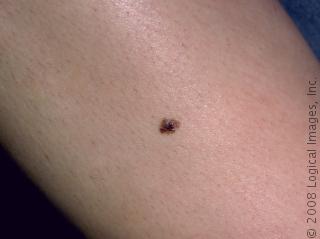 |
| From Sun Safety Alliance Photos |
Melanoma is a cancer of the pigment producing cells in the skin, known as melanocytes. Cancer is a condition in which one type of cell grows without limit in a disorganized fashion, disrupting and replacing normal tissues and their functions, much like weeds overgrowing a garden. Normal melanocytes reside in the outer layer of the skin and produce a brown pigment called melanin, which is responsible for skin color. Melanoma occurs when melanocytes become cancerous, grow, and invade other tissues.
Melanoma begins on the surface of the skin where it is easy to see and treat. If given time to grow, melanoma can grow down into the skin, ultimately reaching the blood and lymphatic vessels, and apread around the body (metastasize), causing life-threatening illness. It is curable when detected early, but can be fatal if allowed to progress and spread. The goal is to detect melanoma early when it is still on the surface of the skin.
Avoid skin cancer. Use sun screen and always reapply. Wear UV protected clothing. Keep a close eye on your skin throughout the year and check your moles for the ABCs of skin cancer detection!
Labels: abcde, basal cell carcinoma, melanoma, squamous cell carcinoma
 |
| From Sun Safety Alliance Photos |
Friday June 19th, the German parliament passed, by large majority, a law that bans those under eighteen from using "solariums", or what Americans know as "tanning beds". The reason: the younger they are the higher the risk. 14 million German users are between the ages of 18 and 45.
"If people under 35 regularly use solariums, the risk of getting at some point in life malignant melanoma, the third deadliest cancer that there is, rises by 75 percent," the ADP's Professor Eckhard Breitbart told reporters.
Germany will soon introduce the right to a skin cancer screening every two years for all people over the age of thirty five. German has also been running a highly effective campaign to increase public awareness of the dangers behind skin cancer, develop by Y&R Germany.
Just because American legislative does not act as quickly as Germany does to the fatalities that occur because of tanning beds, does not mean that the issue is not as severe. Tanning beds cause skin cancer, and skin cancer kills. If you want to avoid skin cancer, yet still want a gorgeous summer glow, try sunless tanning. MayoClinic.com provides readers with a great article on the facts behind sunless tanning:
"Sunless tanning products no longer cause an orange-brown, streaky appearance. Today the products offer an even, natural-looking tan if they're applied correctly and carefully. For best results, follow these tips:
- Choose a light- or medium-toned product, which tends to look more natural.
- Before using the product, wash and exfoliate your skin with a wash cloth or sponge to remove excess dead skin cells. Women should shave their legs for an even application.
- Apply the sunless tanning product evenly and lightly. Use less product on dry skin or thickened skin, such as over your ankles, knees and elbows. These areas tend to absorb more product.
- After you apply the product to your face and body, wash your hands with soap and water to avoid coloring your palms. Be sure to remove any product from under your fingernails. Then use a cotton ball to apply the sunless tanner to the top of each hand.
- To prevent staining your clothes, wait to dress until the sunless tanner dries completely, about 15 to 20 minutes
Labels: germany, international, legislation, tanning booths, teenagers
SELF Magazine, MSNBC, and Dr. Elizabeth Tanzi work to educate the public about the severity of melanoma.
1 comments Posted by Sun Safety Alliance at 10:27 AMDr. Elizabeth Tanzi, (@SkinLaserMD), is an internationally-known author and lecturer on cosmetic dermatology and cutaneous laser surgery. She joined the Washington Institute of Dermatologic Laser Surgery in 2001 and currently serves as the Co-director of Laser Surgery. Dr. Tanzi also holds a position as clinical Instructor in the Department of Dermatology at Johns Hopkins Hospital Center. Dr. Tanzi pursued her medical education at the Upstate Medical Center in Syracuse, New York, where she graduated in the Alpha Omega Alpha. You can visit her website as well at skinlaser.com
Dr. Tanzi is also a skin cancer survivor.
She was recently featured in SELF magazine as well as on the Today show to educate audiences about the seriousness of skin cancer. During the interview, Dr. Tanzi draws attention to many excellent points, that we at the Sun Safety Alliance also hold strong to be advocates of.
"1 million new cases of skin cancer are diagnosed yearly". Skin cancer is on the rise, and people must become smarter while in the sun. "People need to hear about the number of increased cases of skin cancer". Especially melanoma. It is "the most preventable and curable form of cancer", but also the most deadly. The Skin Cancer Foundation has stated that “one person every hour dies from melanoma”.
"30 SPF and up will block 97% of the sun's rays". Fight melanoma by applying and applying and reapplying. When most apply sunscreen, they only apply bare minimum. It's greasy and sticks to every thing. Sand and sunscreen are among the most obnoxious combination. Yet did you know you are supposed to apply an ounce of sunscreen every time you apply and reapply? "Reapply an ounce! That is so much!"
To encourage readers to protect themselves from melanoma, SELF-magazine has offered, in accordance with a recent Harvard study, to send a text message reminder about reapplying sunscreen. If you text SELFSKIN to 467467, you will receive four weekly alerts reminding readers to reapply.
“The only safe tan is a fake tan”. Dr. Tanzi explains that tanning beds are the equivalent of smoking and should not be used. Many young people today are in denial that skin cancer is real and they subject themselves to skin cancer by roasting in tanning beds. They do not understand the severity, look through some of the quotes pulled from twitter:
@Farraaa: “tanning.. yay skin cancer”
@taylordawnn: “tanning again. Skin cnacer? Probably”
@adeledgirltellem“so one of my best friends has skin cancer & i promised i'd stop tanning & such. but i cant do it! sorry bbygrl- LAYING OUT @ the beach <3
Though it is frustrating that a twitter search on "skin cancer" brings up a number of people that are ignorant to the realities of the disease, there are a few that advocate sun safety and skin cancer awareness. Those of us that have the knowledge and the evidence that skin cancer is on the rise must continue to educate those around us. Because many are unaware the severity of skin cancer and it's our job to inform them.
Labels: dr. tanzi, melanoma, msnbc, self magazine, skin cancer, sunscreen, Survivors, today show, twitter
Desperate Housewives' Andrea Bowen Helps Sun Safety Alliance to Launch UV Protective Fashion Line
5 comments Posted by Sun Safety Alliance at 2:25 AM |
in collaboration with the Entertainment Industries Council, Inc. (EIC). SSA has teamed up with AYANA Apparel
 |
to provide fashion-forward UV-Protective t-shirts that protect your skin while maintaining your sense of style.
 |
 |
In addition to acting, Bowen is a strong supporter for sun safety and skin cancer prevention efforts. Bowen says that the shirts not only carry a message about sun protection, they can protect from the damaging effects of the sun and still allow you to stay fashionable. "These are not just message or logo shirts. They're flattering on you and they block the UV rays that usually get through normal tops," she said.
The shirts carry an SPF protection of 30-50 and will help to raise money for prevention efforts. AYANA's web site is located at www.ayanashop.com.
 |
Purchases of the SSA line and other clothing available on the site will result in a donation to SSA by using discount or coupon code SSA09.
You can read the official press release here
Labels: andrea bowen, attire, ayana, celebrities, fashion
Roniette Libedinsky of the Los Angeles Examiner recently reported on the importance of protecting oneself from the sun, even on cloudy days.
The following is quoted from Examiner.com
Not only do clouds not block UV radiation, but they often magnify the effects of radiation because UV rays can be redirected and magnified by clouds. For example, the weather forecast for today, June 2nd, calls for mostly cloudy and scattered showers. Yet the UV index is estimated to be in the high exposure category (7 on a scale of 0-11).
 |
| From Sun Safety Alliance Photos |
Exposure to UV rays is a risk factor for skin cancer, but luckily, this is one factor that can be easily controlled.
• Use a sunscreen with an SPF of 15 or higher. SPF is a measure of the amount of sun exposure you’re protected from; it’s not related to the time of sun exposure.
For example, you might get the same amount of sun exposure during 15 minutes at midday as you would get during 1 hour in the late afternoon. Therefore, wearing a sunscreen with an SPF of 15 does not mean that you can be in the sun 15 times as long as you would normally be before burning.
• Use plenty of sunscreen.
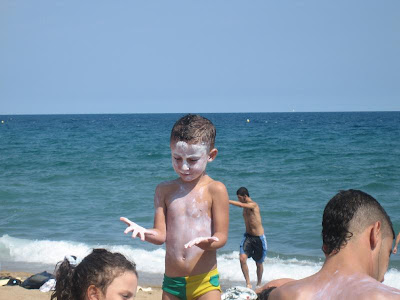 |
| From Sun Safety Alliance Photos |
Many people don't get maximum protection from sunscreens, because they don't use enough of it. About 1 ounce is needed to cover all your exposed parts. Many sunscreens come in about 4 ounce bottles, so about one quarter of the bottle should be used.
Apply sunscreen about 30 minutes before going out and re-apply every 2 hours.
• Choose a sunscreen that offers protection against both UVA and UVB radiation.
 |
| From Sun Safety Alliance Photos |
UVB radiation (280–315nm) damages the skin’s outer layers and is responsible for sunburns and skin cancer. UVA radiation (315–400nm), which penetrates deeper into the skin, is responsible for photoaging (wrinkles) and can also cause skin damage that leads to cancer.
Look for broad-spectrum sunscreens with sulisobenzone, avobenzone (Parsol 1789), ecamsule, titanium dioxide or zinc oxide in the ingredients.
And don’t forget to drink plenty of water.
 |
| From Sun Safety Alliance Photos |
Skin is the body’s largest organ, and it protects us from heat, injury and infection. Not replenishing it with much needed water can lead to unhealthy skin that cannot as readily protect us from the elements.
Labels: cloudy, sun safety, tips
Cold Case's Kathryn Morris Will be Spokesperson for New UV-Protective line
0 comments Posted by Sun Safety Alliance at 1:50 AM |
| From Sun Safety Alliance Photos |
Kathryn Morris has demonstrated her multi-talented capabilities in the world of film and television. She continues to move audiences through her character as detective Lilly Rush, in the CBS hit drama "Cold Case" produced by Jerry Bruckheimer, currently in its seventh season. Additionally, she runs a successful film and television production company with partner David Barrett, Hotplate, at Warner Bros.
Celebrity Interviews - Cold Case: Kathryn Morris - Click here for more home videos
In addition to acting, Morris is a strong supporter for sun safety and skin cancer prevention efforts. “Skin cancer is the most common form of cancer in the U.S. More than one million cases of skin cancers are diagnosed each year, and one person dies from it every hour,” said Morris.
“As someone with fair skin, how could I not get involved in trying to prevent something so preventable?”
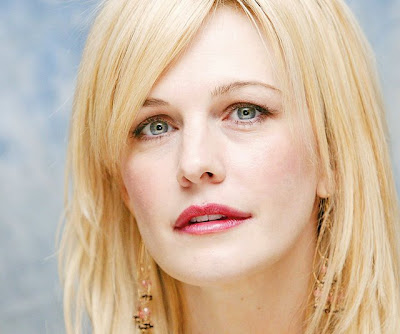 |
| From Sun Safety Alliance Photos |
 |
| From Sun Safety Alliance Photos |
The shirts carry an SPF protection of 30-50 and will help to raise money for prevention efforts. Morris will be featuring the shirts in a photo shoot and also serve as spokespersons for sun safety and skin cancer prevention.
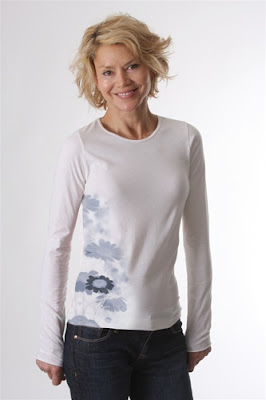 |
| From Sun Safety Alliance Photos |
The line will start with two women’s shirts, as well as one for men and one for small children. If successful, the line will expand to additional colors, designs and styles. Initially, they will be available on AYANA’s web site, which carries a wide variety of sun protective fashions. AYANA and SSA are simultaneously planning to make the line available to other online retailers, with plans to also offer them to traditional brick-and-mortar boutique and chain clothing stores. AYANA’s web site is located at www.ayanashop.com. Purchases of the SSA line and other clothing available on the site will result in a donation to SSA by using discount or coupon code SSA09.
You can read the official press release here
Labels: attire, ayana, celebrities, fashion, kathryn morris
The Hangover: "In the movie I get a bad sunburn, so I did it for real"
1 comments Posted by Sun Safety Alliance at 1:46 AM
Warner Bros. The Hangover , or what Eleanor Marrow of ThisRecording.com calls, "The Docile American Bachelor Party", enjoyed a good three weeks at number one in the box office this past month. You can watch the B Roll for the film here.
In "The Hangover" Justin Bartha's character, Doug Billings, is left on a Las Vegas roof for an entire day. He sits up there and absolutely roasts to the point that he suffers from what appears to be erythema, or sunburn.
 |
| From Sun Safety Alliance Photos |
Justin explains, "In the movie, I get a real bad sunburn, so I do it for real". And Justin really burns himself up there on the roof of Cesar's Palace... (sorry for the spoiler).
 |
| From Sun Safety Alliance Photos |
Had Doug Billings followed the Sun Safety Alliance blog and learned sun safety tips such as
- Reapplying sunscreen often, especially after perspiring.
- Wearing wide brimmed hats in warm temperatures
- Staying in the shade
- Premature and accelerated skin aging: age spots, wrinkles
- Aggravation of existing or underlying skin disorders: eczema, rosacea, psoriasis
- Dehydration
- Photosensitivity / photoreactions
- Second-degree burns
- Secondary infection
- Shock (such as from massive fluid loss)
- Death
Long-term complications may include:
- Pre-cancerous growths
- Skin cancer
Additional studies show UV rays' connection to:
- Cataracts, corneal burns, macular degeneration, and other ocular disorders
In the end, always apply sunscreen, even if it's your bachelor party and you're wasted beyond comprehension and have been drugged by Rohypnol...
remember to apply sunscreen and then reapply to prevent skin cancer.
Labels: film, Justin Bartha, skin cancer, sunscreen, The Hangover
Ayana: Sustainable Beauty Through Intelligent Design
0 comments Posted by Sun Safety Alliance at 1:43 AMOwners Sonja Gfeller Aeschbacher and Frank Aeschbacher, come from three generations of traditional garment entrepreneurs, dating back to the early 1900's. In 1920, Frank's grandfather opened his own tailor shop in his hometown of Aarberg in Switzerland,
From Sun Safety Alliance Photos
where he and fifteen sewers would hand-make suits for the wealthy every day. After World War II, the apparel industry expanded into mass production and retail. The family business was no exception. Eighty years since that first tailor shop, the family continues to deliver high-quality fashion-forward clothing in Europe. In 2003, Sonja and Frank extended the family tradition overseas by moving to the US.
 |
| From Sun Safety Alliance Photos |
As an active, outdoor couple, they immediately took advantage of the near-perfect climate in Southern California, spending much of their leisure time walking along the beach, hiking in the hills, barbeque and exploring new terrain. Always health conscious, they diligently applied sunscreen but found reapplying it several times a day tedious and inconvenient. So they looked for alternative ways to protect themselves from harmful UV rays.
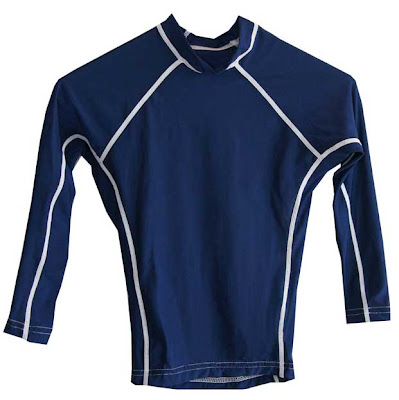 |
| From Sun Safety Alliance Photos |
They discovered UV-Protective clothing but were disappointed in the limited options available to them. Based on a medical model, most UV-Protective clothing is designed strictly for outdoor exercise or is devoid of style.
 |
| From Sun Safety Alliance Photos |
So Sonja and Frank merged fashion sense with health awareness to create AYANA Apparel for women who want to maintain beauty and style while simultaneously protecting their skin.
 |
| From Sun Safety Alliance Photos |
Labels: attire, ayana, fashion, sun protective clothing
Learn the A, B, C, D, E's of Skin Cancer Detection
5 comments Posted by Sun Safety Alliance at 1:20 AM |
| From Sun Safety Alliance Photos |
The ABCDE rule is a quick and helpful guide for detecting the usual signs of skin cancer. It is vital to monitor your skin and contact your doctor about any spots that match the following descriptions:
A- Asymmetry: Normal moles or freckles are completely symmetrical. If you were to draw a line through a normal spot, you would have two symmetrical halves. In cases of skin cancer, spots will not look the same on both sides.
B- Border: A mole or spot with blurry and/or jagged edges.
C- Color: A mole that is more than one hue is suspicious and needs to be evaluated by a doctor. Normal spots are usually one color. This can include lightening or darkening of the mole.
D- Diameter: If it is larger than a pencil eraser (about 1/4 inch or 6mm), it needs to be examined by a doctor. This is includes areas that do not have any other abnormalities (color, border, asymmetry).
E- Elevation: Elevation means the mole is raised above the surface and has an uneven surface.
Labels: abcde, skin cancer
As William Holstien of the New York Times claims, "Ultraviolet Rays are just around the corner!" Now is a good time to brush up on all things "UV".
UV, or ultraviolet, rays are the sun's "invisible" burning rays. They can cause sunburns, and in some cases skin cancer.
There are three types of UV rays:
UVA: Are more constant year-round and penetrate deeper into the skin's layers; UVA rays are also harmful and contribute to burning, premature aging of the skin, and the development of certain forms of skin cancer.
UVB: Are the primary cause of sun burning, premature aging of the skin and the development of skin cancer.
UVC: Are blocked by the ozone layer and do not reach the earth's surface.
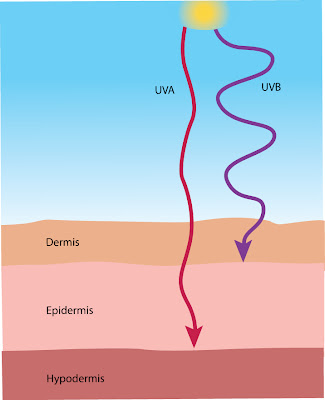 |
| From Sun Safety Alliance Photos |
The more intense the sun, the greater your exposure to UV rays. The amount of UV that will reach you depends on the following:
Time of Day—UV is greatest when the sun is at its highest in the sky (between 10 am and 4 pm) and less in the early morning and late afternoon.
Season—While UV exposure is the greatest in the summer (May—August) in the United States, it is important to remember that UV rays reach Earth every day and you should be sun safe year-round—including wintertime! Snow can reflect 85% to 90% of the sun's UV rays!
Altitude—The air is cleaner and thinner at higher altitudes, so UV exposure is greater in the mountains than in the valleys. (For example, you can still get sunburned while skiing in the winter!)
Location—UV is strongest at the equator and gets weaker as you move towards the poles. Going tropical? Be prepared and take your sunscreen with you on family vacations.
Exposure Time—The longer you are out in the sun, the more UV rays you receive. Remember, you are exposed whenever you're out: picnics, Saturday yard chores, long drives, spectator/sports events, and more!
 |
| From Sun Safety Alliance Photos |
What is the UV Index?!?!?
The UV Index (short for "Ultraviolet Ray Index") is a next-day forecast of the amount of skin-damaging UV radiation that's expected to reach Earth's surface when the sun is highest in the sky (solar noon). It was created to help people make informed decisions about the amount of time that they spend in the sun.
 |
| From Sun Safety Alliance Photos |
How Should You Use This Index?
The UV Index is issued daily to advise you on the strength of the sun's UV rays in your region. Make a habit of checking the index so you'll know how much sun protection you'll need each day.
How Accurate Is the Index?
The UV Index is based on monitoring the sun's position, cloud movements, altitude, ozone data, and other factors. Each year the National Weather Service performs a validation of the UV Index forecasts by incorporating the help from several government agencies and private companies, hospitals, and colleges, that provide observations of surface UV radiation. From these observations, statistical corrections are made to ensure accuracy of the index.
Ozone & Local Effects
While it is well known that the Earth's ozone decreases the amount of UV rays you receive, the exact impact of ozone depletion is not yet fully understood. However, some local factors such as smog, or the type of reflective surface you're near, can also determine the amount of exposure you receive. For example, water, sand, snow, and concrete can all reflect ultraviolet rays, increasing your exposure.
Check the UV index of your hometown here!
Sun Safety Activities: Middle School and High School
1 comments Posted by Sun Safety Alliance at 1:12 AM |
| From Sun Safety Alliance Photos |
Skin cancer is America’s fastest growing health epidemic. This year, more than 1.2 million new cases of skin cancer will be diagnosed, more than all cases of breast, lung, prostrate and colon cancer combined. Most people do not know that skin cancer is deadly –claiming one life every hour.
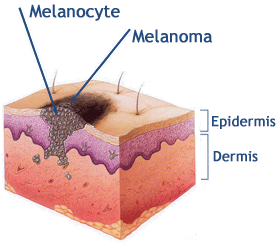 |
| From Sun Safety Alliance Photos |
Melanoma is increasingly affecting young adults. This correlates with the rise in use of indoor tanning facilities over the past two decades. Overexposure to UV radiation is an important health issue for all skin types.
 |
| From Sun Safety Alliance Photos |
Effects of overexposure, in addition to cancer, include sunburn, dehydration, dry skin, wrinkles, eye damage, and scarring due to skin cancer. Always remind your young teens and young adults that although they are not babies, they should still make an effort to protect themselves from powerful UV rays:
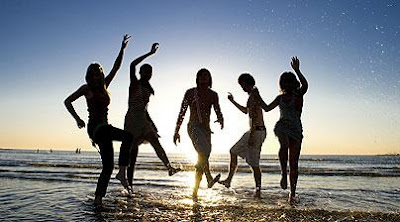 |
| From Sun Safety Alliance Photos |
- Avoid peak hours when UV rays are most harmful (10:00 AM-4:00 PM)
- Stay in the shade
- Avoid tanning beds and sun lamps
- Wear cover-up clothing
- Wear a hat
- Wear UV protective sunglasses
- Apply sunscreen
- Check UV, heat, and air quality indexes
- Drink plenty of water
- Practice sun safety every day, all year long
 Download an activities sheet for middle schoolers here Download an activities sheet for high schoolers here |
Labels: sun safety, tanning booths, teenagers
In honor of Sun Safety Week, CBS Cares made a statement about the dangers of sun exposure in a public service announcement that will air nationally on prime time television during Big Bang Theory and Crimetime.
Kudos to CBS Cares for its inspired initiative in delivering sun safe messages to the public. The CBS Cares campaign has demonstrated its strong dedication to providing national audiences with effective public health messages. During this PSA's initial running, CBS cares was able to reach over 56 million viewers!
We are deeply appreciative of the creation and dissemination of this sun safety CBS Cares public service announcement. Through sufficient exposure to the facts about sun safety and skin cancer, we will motivate Americans to learn how to be safe while enjoying the great outdoors, and at the same time, save their life and the lives of loved ones.
Thank you to CBS Cares for its leadership in this important health issue.
Labels: big bang theory, cbs cares, television
Fresh air, sunshine, and exercise are essential to the healthy development of young children. Children who regularly spend time running, jumping, and playing outdoors are generally more fit and have a lower risk of being overweight. Adults should encourage children to be outside, active, and safe – including sun-safe.
The main message for young children is “Your skin protects you. You should protect your skin.” For children in grades K-2, these activities focus on actions and decisions that children can make themselves – such as seeking shade. For children in grades 3-5, these activities integrate language, math, and science skills with sun-safety information. Sun safety education should promote informed decision making skills and life-long health habits.
Download an activities worksheet for grades K-2 here
Download an activities worksheet for grades 3-5 here
Labels: elementary, sun safety
Today R.J. Ignelzi, a Union-Tribune Staff Writer challenged readers of "signonsandiego" to test their knowledge on how to best block the sun's harmful rays. “All of us need to wear sunscreen with at least an SPF 15 – SPF 30 is even better – every day, no matter what your skin type or color,” says Dr. Darrell Gonzales, a dermatologist at Scripps Memorial Hospital
The following is a direct quote from signonsandiego.com
"You'd think with all the talk about sunscreens and skin cancer prevention that we'd have it made in the shade by now. Unfortunately, that's not the case.
According to the American Cancer Society, more than 1 million new cases of skin cancer will be diagnosed in the United States this year and an estimated one in five Americans will develop skin cancer in his or her lifetime.
That's more than breast, prostate, lung and colon cancers combined. It's the most common type of cancer, but it's also the most preventable.
Here's the rub: Most people don't use sunscreen correctly or combine it with other forms of sun protection to effectively safeguard their skin"
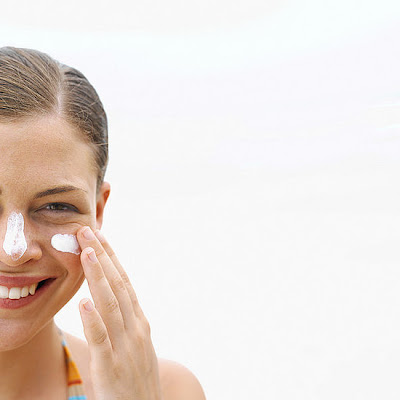 |
| From Sun Safety Alliance Photos |
We agree R.J. Excellent point! That' why we are here to provide people with all they need to know about the logistics of sunscreen.
How should sunscreens be applied?
- Follow directions and shake the bottle before using.
- Thoroughly rub sunscreen over skin to make sure the coverage is even.
- Make sure all skin is covered (including neck, ears and lips).
- For people with thin or thinning hair, apply sunscreen to the scalp as well.
- Sunscreen should be applied liberally and evenly to all exposed areas before sun or water exposure.
When should I apply sunscreen?
- Before doing any outside activities.
- Whenever you're spending time outdoors—and not just in the pool! (for picnics, walks, hiking, riding in a car, etc)
How often should sunscreen be applied?
- Reapply sunscreen after swimming, perspiring, and toweling off.
- Reapply sunscreen often!
- Reapply Reapply Reapply
- "SPF" stands for "Sun Protection Factor."
- Indicates how much longer a person wearing sunscreen can stay in the sun before beginning to burn—than they would without using any sunscreen at all.
- SPF numbers generally range from 2 to 50.
- The American Academy of Dermatology and the Sun Safety Alliance (SSA) recommend an SPF of 15 or higher.
- For children, the SSA recommends sunscreen product with an SPF of 30.
What strength of sunscreen is best?
- Apply a sunscreen with an SPF of 15 or higher whenever you're outdoors.
- For children under 6 years of age, the SSA recommends sunscreen with an SPF 30 or higher. Older children should use sunscreen that is SPF 15 or higher.
What Kinds of Sunscreens Are Available?
The role of sunscreens is to absorb, reflect or scatter damaging UV rays before they have a chance to interact with the skin. There are, however, many types of sunscreen available on the market today with many types of ingredients (and inactive ingredients) for various purposes and lifestyles. Whatever you choose, you should make sure your sunscreen provides both UVA and UVB protection.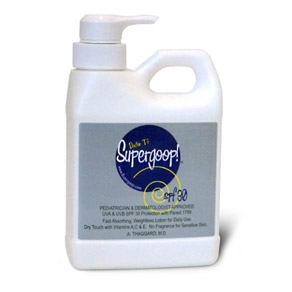 |
| From Sun Safety Alliance Photos |
Avobenzone
Also known as Parsol® 1789, this sunscreen provides effective UVA protection and is used in combination with other sunscreens to provide broad-spectrum protection.
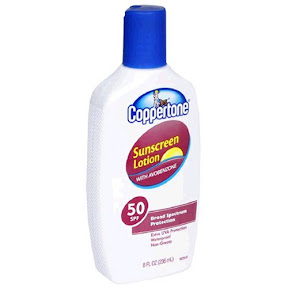 |
| From Sun Safety Alliance Photos |
Benzophenone
A class of sunscreens which includes oxybenzone, used in US products. These provide the UVA and UVB protection for many sunscreen products, but there is a great deal of controversy about its anaphylactic reaction, especially to children.
Homosalate
Homosalate is a UVB sunscreen that is often used in products with lower SPF ratings or in combination with other sunscreens in higher-protection products.
 |
| From Sun Safety Alliance Photos |
Octisalate
A relative of homosalate, this UVB sunscreen is also used in lower-SPF products or combined with other sunscreens in products of higher SPF.
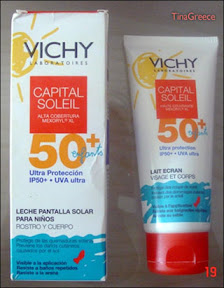 |
| From Sun Safety Alliance Photos |
Oxybenzone
A common sunscreen used in combination with other sunscreens to provide broad-spectrum protection.
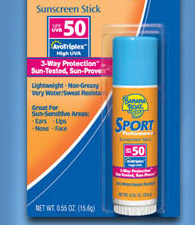 |
| From Sun Safety Alliance Photos |
Para-aminobenzoic acid
Para-aminobenzoic acid was used as a sunscreen for many years, but is no longer used for many products. PABA can stain clothing and sting skin.
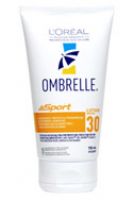 |
| From Sun Safety Alliance Photos |
Padimate 0
This water-resistant sunscreen is sometimes used for UVB protection in US products. (Also called octyl dimethyl PABA.)
 |
| From Sun Safety Alliance Photos |
Broad-spectrum Protection
This refers to sunscreen products that contain ingredients to protect against both UVB and UVA rays.
Noncomedogenic
A product that is noncomedogenic will not clog the skin's pores. Noncomedogenic sunscreen products are designed for those who experience frequent or occasional breakouts.
Sunblock
Sunblock is a term used by sunscreen manufacturers to represent products which provide an SPF 12 or higher.
Sunscreens
All sun-protection products labeled with an SPF of 2 or higher are considered sunscreens. Sunscreen agents absorb, reflect, or scatter UV light.
Sweatproof
"Sweatproof" indicates that a product maintains its degree of sunburn protection after 40 minutes of water exposure.
Water-resistant, Waterproof
"Water-resistant" indicates that a product maintains its degree of sunburn protection after 40 minutes of water exposure. "Waterproof" or "very water-resistant" indicates that the degree of sunburn protection is maintained after 80 minutes of such exposure.
Labels: sunscreen
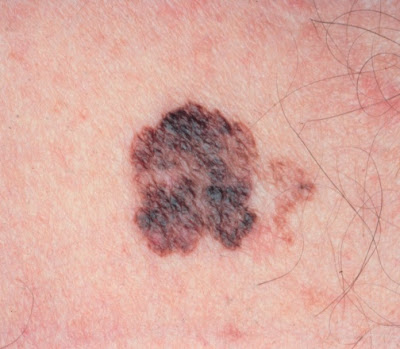 |
| From Sun Safety Alliance Photos |
Melanoma is the most serious type of skin cancer. It begins in skin cells called melanocytes.
Melanocytes are the cells that make melanin, which gives skin its color. Melanin also protects the deeper layers of the skin from the sun's harmful ultraviolet (UV) rays.
When people spend time in the sunlight, the melanocytes make more melanin and cause the skin to tan. This also happens when skin is exposed to other forms of ultraviolet light (such as in a tanning booth). If the skin receives too much ultraviolet light, the melanocytes may begin to grow abnormally and become cancerous. This condition is called melanoma.
How and where does melanoma appear?
The first sign of melanoma is often a change in the size, shape, or color of a mole. But melanoma can also appear on the body as a new mole.
- In men, melanoma most often shows up:
- On the upper body, between the shoulders and hips
- On the head and neck
- In women, melanoma often develops on the lower legs.
- In dark-skinned people, melanoma often appears:
- Under the fingernails or toenails
- On the palms of the hands
- On the soles of the feet
Although these are the most common places on the body for melanomas to appear, they can appear anywhere on the skin. That's why it is important to always examine your skin to check for new moles or changes in moles.
With early diagnosis and treatment, the chances of recovery are very good.
The chance of getting melanoma increases as you get older, but people of any age can get melanoma. In fact, melanoma is one of the most common cancers in young adults. Each year, more than 50,000 people in the U.S. learn that they have melanoma.
Melanoma is a serious and sometimes life-threatening cancer. If melanoma is found and treated in its early stages, the chances of recovery are very good. If it is not found early, melanoma can grow deeper into the skin and spread to other parts of the body. This spread is called metastasis.
Once melanoma has spread to other parts of the body beyond the skin, it is difficult to treat.
Labels: melanoma
Sun Safety Alliance Shows Appreciation toward BET Foundation
0 comments Posted by Sun Safety Alliance at 1:04 AM |
| From Sun Safety Alliance Photos |
The BET Foundation is a non-profit 501(c)(3) organization established in 2003 by BET Networks to create a national healthy lifestyles campaign. The mission of the BET Foundation is to promote healthy lifestyles among African-Americans, focusing primarily on the issue of obesity, cardiovascular diseases, diabetes, some forms of cancer, mental health disorders and other associated health conditions. The BET Foundation highlights behavioral factors in the African-American community that lead to these health conditions in order to effectively alleviate these concerns among community members. BET Foundation has collaborated with SSA to educate the public about skin cancer, and specifically to dispel myths and misconceptions about skin cancer in skin of color populations.
 |
| From Sun Safety Alliance Photos |
 |
| From Sun Safety Alliance Photos |
Myth: Individuals with darker skin aren't at risk for skin cancer.
Fact: While people with darker skin do not burn as easily or frequently as lighter skinned individuals, they are still not safe from harmful ultraviolet rays from the sun.
 |
| From Sun Safety Alliance Photos |
Skin cancer effects everyone, no matter the color of their skin. In fact, skin cancer awareness is especially important in skin of color populations due to common misconceptions that individuals are not at risk.
SSA would like to say a special thank you to the BET Foundation for providing educational bookmark resources to promote sun safety and skin cancer prevention.
Labels: television